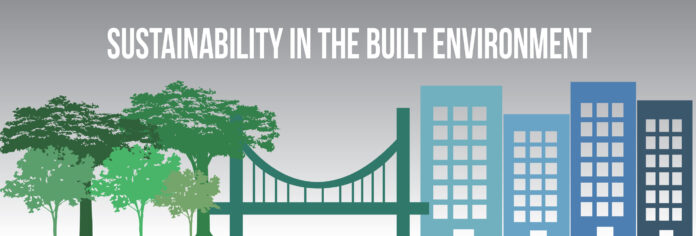 In Italian, the phrase “Bosco Verticale” literally translates to “vertical forest.” The two Bosco Verticale Towers, designed by the Stefano Boeri Architectural Firm, are currently being built in the extremely polluted city of Milan, Italy. These towers are stunning structures that incorporate both structural engineering and landscape architecture disciplines. Littered with various trees, shrubs and plants – over 21,000 total – the towers aim to serve the high-end housing community while simultaneously reducing the city’s alarmingly high carbon dioxide (CO2) levels. On paper this design seems extremely plausible and potentially groundbreaking; but one must ask the question of whether or not we are forcing a notion of “green design” onto our structures. Are we merely trying to disguise the dreadfulness of our man-made structures with a natural façade? Or is this truly a beautiful and necessary fusion of the built environment with natural systems?
In Italian, the phrase “Bosco Verticale” literally translates to “vertical forest.” The two Bosco Verticale Towers, designed by the Stefano Boeri Architectural Firm, are currently being built in the extremely polluted city of Milan, Italy. These towers are stunning structures that incorporate both structural engineering and landscape architecture disciplines. Littered with various trees, shrubs and plants – over 21,000 total – the towers aim to serve the high-end housing community while simultaneously reducing the city’s alarmingly high carbon dioxide (CO2) levels. On paper this design seems extremely plausible and potentially groundbreaking; but one must ask the question of whether or not we are forcing a notion of “green design” onto our structures. Are we merely trying to disguise the dreadfulness of our man-made structures with a natural façade? Or is this truly a beautiful and necessary fusion of the built environment with natural systems?
A good place to start while discussing the Bosco Verticale Towers is the positive impacts of the entire system. Obviously, the decrease in CO2 levels is amazing. Just one tree can store up to 48 pounds of CO2 a year and produce about 260 pounds of oxygen (O2) a year. This is a great solution to the poor air quality in Milan. The amount of plants on this building also increases shading, which implies the reduction of internal heating and cooling energy usage due to thermal absorption in the plants. This building also gives the city a more aesthetically pleasing look and feel.
Following the introduction of plants and trees is the creation of a certain microclimate. This microclimate is simply a filter which removes certain dust particles present in the air (a natural property of plants). A cool analogy here is that the two towers will act as “green lungs” for the city.
The introduction of such a huge engineering project pumps massive amounts of capital back into the city of Milan — both in terms of engineering contracts and increased global awareness of the city. So the building itself, in addition to being a sustainability poster child, will also aid in the socioeconomic situation in the city of Milan, and Italy itself.
So now the burning question must be asked — what’s wrong with the Bosco Verticale Towers? For starters, some would argue that the towers aren’t truly a green system. The building still requires massive amounts of cooling and heating electricity and still uses millions of gallons of water each day (without an efficient recyclable water system and a poor rain collection system). Are the trees merely a cover-up for the lack of solving these problems?
The towers are also potentially dangerous. Milan is a city subjected to medium to sometimes high winds (especially at elevated locations). This is troubling as the trees will be subjected to high forces and some will break, causing massive damage.
Also, the very notion of planting trees within the building is troubling, because it goes against the natural growth process of trees. Limiting a tree’s roots will yield either a malnourished or undergrown tree. The limitation of the trees’ root system could be the initial downfall of all the trees on the Bosco Verticale Towers.
With both the pros and cons in mind, the introduction of the vertical forest seems to be logical and innovative, but there are potential issues. Green engineering is rooted (no pun intended) in pushing the boundaries of assimilating natural systems with built systems, and Bosco Verticale does that perfectly. Yes, there are cons to the current design, but the benefits and environmental potential of the towers outweigh these cons. The possibility of a beautiful, oxygen-producing, energy-reducing, vertical housing complex is an amazing engineering feat, and certain risks must be taken to see the ideas come to fruition. The architects and engineers at Stefano Boeri, in addition to the engineering board of directors for the city of Milan, have made a calculated risk to go forth with the tower. This risk is pushing the boundaries of the green engineering community. This risk is generally supported by the engineering, architecture and “big-building enthusiasts” around the world. The Bosco Verticale Tower is paving the way toward sustainable design on a very large-scale.
BRENT LUND can be reached at brlund@ucdavis.edu
Graphic by CA Aggie Graphic Design Team
Photo by CA Aggie Photo Team




